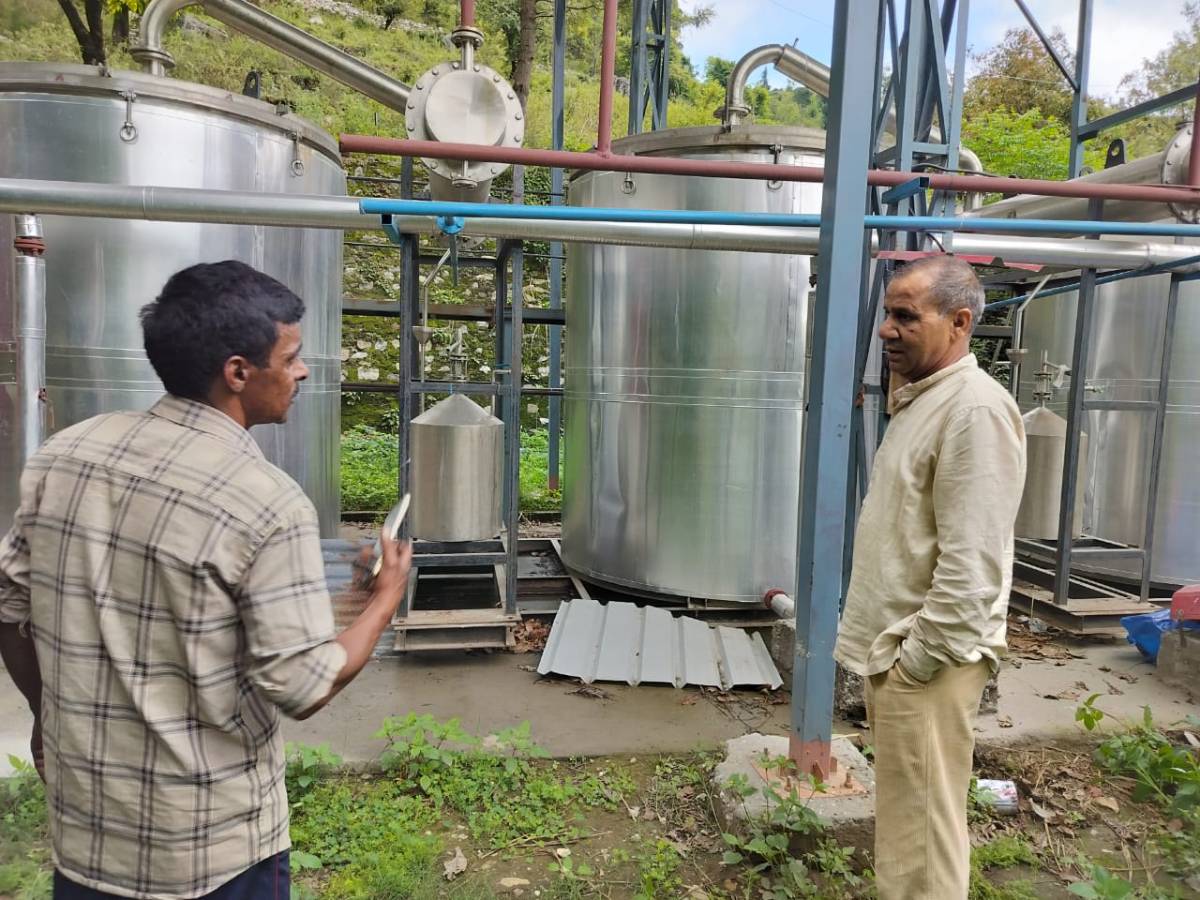Introduction of Social Protection and Shift in the Politics of Labour
When independent India’s Constitution was drafted, social security was specially included in List III to Schedule VII of the constitution and it was made as the concurrent responsibility of the central and state governments.A number of directive principles of state policy relating to aspects of social security were incorporated in the Indian constitution. Initiatives in the form of Acts such as the Workmen’s Compensation Act (1923), the Industrial Disputes Act (1947), the Employees State Insurance Act (1948), the Minimum Wages Act (1948), the Coal Mines Provident Funds and Miscellaneous Provisions Act (1948), The Employees Provident Fund and Miscellaneous Provisions Act (1952), the Maternity Benefit Act (1961), the Seamen’s Provident Fund Act (1966), the Contract Labour Act (1970), the Payment of Gratuity Act (1972), the Building and Construction Workers Act (1996) etc. reveal the attention given to the organized workers to attain different kinds of social security and welfare benefits.
Historically, mobilization, electoral and mass struggles, and a broad-based alliance of poor peasants, agricultural labour and workers collectively merged into a political constituency. This was evident in traditional industries such as the agro-processing coir and cashew industry in the 1970s where issues such as mechanisation and decentralisation of production, expansion of public and cooperative sectors, minimum wage law, statutory bonuses in industry, institutionalising collective bargaining were taken up. Later, comprehensive welfare measures were extended to agricultural workers and to the informal sector work such as construction, beedi manufacture, fisherfolk, headload workers, public distribution (food), healthcare and education as part of ‘social development’. These extensions took place in a changed political environment that saw a split in trade unions along political lines leading to unionisation rivalries especially in the informal sector. Public policy in support of the poor arose in the 1980s in the form of welfare funds covering headload workers (located in urban areas), fish workers, artisans, handloom and motor transport workers, clerks working with lawyers, and also in sectors such as the coir and cashew industry where women workers predominated.
In the 1990s, seven more welfare funds were added in the form of collective care arrangements which was essentially an institutional model of collective contributions made by workers, employers and the state, ensuring some social security at the end of a working life. Where a welfare fund did not provide old-age security, pension fund allocations were made in the budget itself. However, a majority of informal sector workers, women in particular, still remained outside welfare protection.Where unions played a role in the entry into the labour market, the employers sometimes colluded with unions to restrict the number of registered workers with a section of unregistered workers who were excluded from welfare funds.
Problems with the Existing Laws
A central challenge to labour regulation is to provide sufficient rights and safeguards to the workforce while creating an enabling environment to facilitate growth of the firms so as to increase output. The labour laws existent currently have failed on both of these fronts due to the following reasons:
- Numbers and Complexity of the laws: At the union level there existed more than 40 laws and at the state level there existed more than 100 laws, this piecemeal, ad-hoc approach has complicated matters more so as many of these laws are mutually inconsistent, having different definitions of the same clauses. For example the definition of appropriate government, worker, employee establishment and wagers vary in many of the legislations to which the codes refer to.The problem of multiple laws dealing with the same subject is also a serious For example there are multiple laws on each of the subjects of wages, health and safety ad social security. This is major barrier in the incubation of new businesses and cause hardships to entrepreneurs. Consequently resulted in lower Ease-of-doing –business rank for India, which is a major factor controlling incoming foreign investment.
- Poor enforcement of laws: Many CAG reports have pointed out the labour law enforcement in India has been very weak due to which the workers have been suffering under very little CAG report has pointed out the following reason for the same. 1) Delay by government in referring the labour dispute for adjudication, 2) Delay in disposal of the case. 3) delay in publication of award in the gazette, 4) Delay in implementation of the award. Moreover Economic survey 2018-19 pointed out that one in every three wage worker do not receive minimum wage prescribed by law due to lack of enforcement, the condition of the non-wage workers is much worse.
- Constrained growth of firms: Experts have suggested the excessive restrictions imposed on the firms worked as a disincentive to keep the firms smaller hence not achieving economies of scale As most labour laws apply to firms over a certain size. This threshold creates a negative incentive to keep the firm small, in order to avoid complying with the law, promoting dwarfism. 6th Economic census reported that there were 6 crore establishments in India employing 13.1 crore people but 79% of these employ less than 10 people. Moreover, Industrial Disputes Act 1947, requires firms employing 100 workers or more to obtain permission of the government before closing down, or laying off or retrenching workers, creating exit barrier.
- The restrictive labour regulations tended to promote more capital intensive industries rather than more labour intensive ones which are more suited to Indian economy as there is a labour surplus.
- Since there is a disincentive to grow the number of employs this led to hiring of more and more contractual employees the share of contractual workers in factories as a proportion to total workers grew from 26% in 2004-05 to 36% in 2017-18 while the share if hired workers fell from 74% to 64%, which has had two major impacts in labour welfare in India:
- First it is a known fact that the social security and labour welfare of the contractual employees are not enforced to the same extent, thus they face adverse working condition.
- It weakens the trade unions as the contractual workers are not part of the union thus degrading collective bargaining.
- Left out many new and emerging works, workers like gig workers, migrant labour, cab drivers, and house help. Labour falls under the Concurrent List of the Constitution. Therefore, both Parliament and state legislatures can make laws regulating labour. There are over 100 state and 40 central laws regulating various aspects of labour such as resolution of industrial disputes, working conditions, social security and wages. [1]
The Second National Commission on Labour (2002) (NCL) found existing legislation to be complex, with archaic provisions and inconsistent definitions.[2] To improve ease of compliance and ensure uniformity in labour laws, the NCL recommended the consolidation of central labour laws into broader groups such as (i) industrial relations, (ii) wages, (iii) social security, (iv) safety, and (v) welfare and working conditions.
Simplification of Labour Laws
The 2nd National Commission on Labour (NCL) recommended consolidation of central labour laws. It observed that there are numerous labour laws, both at the centre and in states. Further, labour laws have been added in a piecemeal manner, which has resulted in these laws being ad-hoc, complicated, mutually inconsistent with varying definitions, and containing outdated clauses.[2] For example, there are multiple laws each on wages, industrial safety, industrial relations, and social security; some of these laws cater to different categories of workers, such as contract labour and migrant workers, and others are focused on protection of workers in specific industries, such as cine workers, construction workers, sales promotion employees, and journalists.
Further, several laws have differing definitions of common terms such as “appropriate government”, “worker”, “employee”, “establishment”, and “wages”, resulting in varied interpretation. Also, some laws contain archaic provisions and detailed instructions (e.g., the Factories Act, 1948 contains provisions for maintaining spittoons and frequency of white- washing walls).
The Commission emphasised the need to simplify and consolidate labour laws for the sake of transparency, and uniformity in definitions and approach. Since various labour laws apply to different categories of employees and across various thresholds, their consolidation would also allow for greater coverage of labour. Following the recommendations of NCL, the four Codes on wages, industrial relations, social security, and occupational safety were introduced in Parliament.
While the Codes consolidate and simplify existing laws to some extent, they fall short in some respects. For example, the Codes on occupational safety and social security continue to retain distinct provisions of each of the laws that these Codes subsume. For example, while the Occupational Safety Code contains provisions on leaves for all employees, it continues to retain additional leave entitlements for sales promotion employees (e.g. earned medical leave for 1/18th of time on duty). Similarly, while the Codes rationalise definitions of different terms to a large extent, they are not uniform in all respects.
For example, while the Codes on wages, occupational safety and social security contain the same definition of “contractor”, the code on industrial relations does not define the term. Finally, while the government stated that 40 central labour laws would be subsumed, the four Codes only replace 29 laws. The Annexure to this note lists the laws which are being subsumed by each of the Codes.
Facilitating Job Creation while Protecting Work
The 6th Economic Census (2013-14) reported that there were 5.9 crore establishments in India employing 13.1 crore people (of which 72 per cent were self-employed and 28 per cent hired at least one worker). [4] A total of 79 per cent workers were in establishments with less than ten workers. The central challenge to labour regulation is to provide sufficient rights to workers while creating an enabling environment that can facilitate firm output and growth, leading to job creation. Firms should find it easy to adapt to changing business environment and be able to change their output (and employment) levels accordingly. At the same time, workers need protection of assured minimum wages, social security, and reduction in job insecurity, health and safety standards, and a mechanism for ensuring collective bargaining rights. This would also require a labour administration that effectively manages conflicts and ensures the enforcement of rights.
It has been argued that firm sizes have remained small in India because of: (i) labour rigidity arising from the fear of having to take prior permission for retrenchment/closure even if businesses are not viable (lack of an easy exit option), and (ii) high administrative burden since multiplicity of labour laws has resulted in multiple inspections, returns and registers.[5] This has constrained growth of firms.[5] Amongst registered factories, the Annual Survey of Industries (2017-18) indicates that 47 per cent factories employ less than 20 workers, but provide only 5 per cent of employment, and 4 per cent of output.[6] Further, high administrative burden has resulted in corruption and rent-seeking.{5}
In order to get around the rigidities in hiring and firing that constrain the ability to adjust to production demands, businesses have increasingly used contract labour.[5] The share of contract workers in factories among total workers increased from 26 per cent in 2004-05 to 36 per cent in 2017-18, while the share of directly hired workers fell from 74 per cent to 64 per cent over the same period.[7],[8]
Table 1: Attributes of registered factories by worker size (ASI 2017-18)
| Feature | 0-19 | 20-99 | 100-499 | 500-4999 | At least 5000 |
| per cent of total factories | 47.1% | 33.8% | 14.3% | 4.4% | 0.3% |
| Fixed capital utilized | 3.5% | 8.2% | 19.6% | 44.7% | 24.1% |
| Persons engaged | 5.0% | 18.4% | 32.1% | 35.9% | 8.6% |
| Output produced | 4.1% | 15.3% | 25.8% | 40.1% | 14.6% |
| Net value added | 2.2% | 11.7% | 25.0% | 47.5% | 13.6% |
Sources: Annual Survey of Industries (2017-18); PRS.
However, it has been observed that rights of contract labour to wages and social security dues have not been enforced to the same extent as that of permanent workmen and they face precarious working conditions.[2] Further, various studies have observed that labour enforcement in India has been weak and has not protected workers adequately, the success of collective bargaining has been low because of lack of recognition to bargaining agents, and the coverage of labour laws has been inadequate.[5],[9]
The Periodic Labour Force Survey Report (2018-19) indicates that 70 per cent of regular wage/salaried employees in the non-agricultural sector did not have a written contract, 54 per cent were not eligible for paid leave and 52 per cent did not have any social security benefit.[10]
Note that studies have shown that ultimately firm growth and job creation may also depend on several other key factors, which include infrastructure development, access to finance, availability of skilled manpower, boost in skill upgradation, and reduction in overall corruption.[11],[12] However, one could argue that current laws have neither benefited industries (as they have constrained firm growth) nor workers (due to lack of formalization and weak enforcement). Expert committees have made recommendations to address this issue. We discuss below various aspects of these recommendations, and the provisions in the four new labour codes.
Coverage of Establishments under Labour Laws
Most labour laws apply to establishments over a certain size (typically 10 or over). Low numeric thresholds may create adverse incentives for establishment’s sizes to remain small, in order to avoid complying with labour regulation. Further, these laws only cover the organised sector (around 7 per cent of the workforce). [9]
It has been argued that small firms may be exempted from application of various labour laws in order to reduce the compliance burden on infant industries and to promote their economic growth.[13],[14] However, low numeric thresholds may create adverse incentives for establishments sizes to remain small, in order to avoid complying with labour regulation.[13],[14]. To promote the growth of smaller establishments, some states have amended their labour laws to increase the threshold of their application. For instance, Rajasthan increased the threshold of applicability of the Factories Act, 1948, from 10 workers to 20 workers (if power is used), and from 20 workers to 40 workers (if power is not used). The Economic Survey (2018-19) noted that increased thresholds for certain labour laws in Rajasthan resulted in an increase in growth of total output in the state and total output per factory. [9]
On the other hand, some have argued that basic provisions for enforcement of wages, provision of social security, safety at the workplace, and decent working conditions, should apply to all establishments, regardless of size.2,13 In this regard, the NCL had recommended a separate law for small scale units (having less than 20 workers) with less stringent provisions for conditions such as payment of wages, welfare facilities, social security, retrenchment and closure, and resolution of disputes. Further, for unorganised sector establishments (which fall outside the purview of labour laws), the National Commission for Enterprises in the Unorganised Sector (NCEUS) made a number of recommendations to address the social security and minimum conditions of work for both agricultural and non-agricultural workers and suggested two Bills – one for each sector. [15] Note that the Economic Survey (2018-19) estimates that almost 93 per cent of the total workforce is informal. [9]
The ILO (2005) notes that only 10 per cent of its member states had exempted small enterprises from labour regulation altogether. [16] Most countries adopt a mixed approach to labour regulation. For instance, health and safety laws in the US, UK, South Africa and Philippines provide universal coverage to all workers (except for domestic help in the US and UK). [17] However, certain obligations under these laws are only applicable to enterprises with employees over a certain threshold. For example, record-keeping obligations for work-related accidents in the US do not apply to establishments with less than 10 employees or in “low hazard” industries.
Thresholds for lay-off, Closure and Retrenchment
The Industrial Disputes Act (IDA) 1947, requires factories, mines and plantations employing 100 or more workers to obtain prior permission of the government before closing down, or laying off or retrenching workers. It has been argued that the requirement of prior permission has created an exit barrier for firms and hindered their ability to adjust labour workforce to production demands.
The Standing Committee on Labour (2009) recommended that the government consider amendments to include provisions of prior notice, adequate compensation, and other benefits for retrenched workers to balance the need for economic efficiency of businesses. [18] NCL noted that unviable firms should be allowed to close while also ensuring prior scrutiny of grounds of closure and reasons for loss of viability. Therefore, it recommended that the requirement of prior permission may be retained for closure of establishments which hire 300 or more workers and be made applicable to all types of establishments. However, the requirement for prior permission should be removed for lay off and retrenchment. To balance the interests of workers, adequate notice and compensation must be provided, there must be consultation with the representatives of the workers and judicial recourse must be provided against the closure.
It also recommended that the government consider a contribution-based unemployment insurance (in establishments covered by the Employees’ Provident Fund Act) to take care of retrenched workers or those whose establishments have been closed. The benefit would be payable for one year or till re-employment, whichever is earlier.
The recommendations of NCL on retrenchment, closure and lay-offs are summarized below:
Table 2: Comparison of IDA provisions and changes proposed by NCL for lay-offs, retrenchment and closure.
| Feature | ID Act 1947 | NCL Recommendations |
| Prior Permission | Required for lay- offs, closure and retrenchment in
establishments with 100 or more workers. |
Not required for lay-offs and retrenchment.
Required for closure in establishments with 300 or more workers |
| Clearance of dues as a pre-condition | No | Yes |
| Notice period | One month | Two months |
| Compensation | At the rate of 15 days (for closure and retrenchment)
50 per cent of wages for lay offs |
Based on whether enterprise is profitable or loss making:
Closure for establishments with more than 100 workers: 30 days (for sick enterprises with three years’ losses and filed for bankruptcy/winding up) and 45 days (for profit making enterprises) Retrenchment for establishments with more than 100 workers: 45 days (for sick enterprises looking to become viable by retrenching) and 60 days (for profit making one enterprises) 50 per cent of above to be paid for enterprises with 100 or less workers. 50 per cent of wages for lay-offs. Government approval to be obtained in establishments with 300 or more workers if lay-off exceeds one month. |
Sources: Industrial Disputes Act, 1947; 2nd NCL Report; PRS.
Some states have amended the threshold provision of the IDA 1947. For example, Rajasthan amended the Act in 2014 to increase the threshold from 100 workers to 300 workers. A report of the ILO (2020) suggested that only 22 countries (including India, Pakistan and Thailand) require collective dismissals to be authorized by public authorities. [19] Of these, seven countries (including India, Sri Lanka and Colombia) do not require consultation with workers’ representatives. On the other hand, most countries require notification to both workers’ representatives and competent authorities, but no prior permission.
Provisions of the Code: The Industrial Relations Code increases the threshold to 300 workers while retaining the notice and compensation requirements specified under the IDA 1947. It allows the government to further increase the threshold by notification.
Labour Administration
All labour laws have distinct compliance requirements for employing units. Multiplicity of labour laws has resulted in multiple inspections, returns and registers. One private study reported that states have 423 labour-related Acts, 31,605 compliances and 2,913 related filings.[20] On the other hand, it has been argued that the labour enforcement machinery has been ineffective because of poor enforcement, inadequate penalties and rent-seeking behavior of inspectors. Further, dispute resolution processes need reform to make them more effective. Various committees proposed reforms to tackle three types of issues: compliance burden, enforcement of laws, and resolution of disputes.
Reduce Compliance Burden
NCL recommended moving towards a regime of self-certification with selective inspections based on returns submitted by the employing units (with the exception of routine inspections where conditions of safety are concerned). [2] However, routine inspections may be retained in the unorganised sector to protect worker interests. To make the enforcement machinery accountable, at least 10 per cent check of all inspections should be done by superior officers at all levels. Certain states such as Gujarat, Punjab and Haryana have already moved to self-certification for certain laws. One Committee (Chair: Anwar Huda, Member, Planning Commission) endorsed a regime of third-party inspections, with regulatory compliances certified by external and recognized agencies, accompanied with a system of joint inspections and annual calendars of inspections. [21] Note however that India has ratified ILO Convention No. 81 which emphasizes on the labour inspector’s right to enter premises freely without prior notice to ensure compliance of labour laws. In view of this, aWorking Group constituted under the Planning Commission (for 2012-17) recommended that complaint-based inspections and self-certification can complement the present system without substituting it. [22]
A 1988 Act allows establishments with up to 19 workers and up to 40 workers to submit combined annual returns and a unified register under 16 central laws (including laws which cover wages, factories and contract labour); NCL recommended extending its application to all establishments in order to simplify registers and returns required to be maintained/filed under different laws.[23] Further, offences of a technical nature, such as failure to maintain registers or file returns may provide for compounding (i.e. settlement) instead of prosecution.
Improve Enforcement of Laws
Various Committees have recommended strengthening the enforcement machinery by increasing manpower and improving labour enforcement infrastructure. {22, 24] The NCL recommended upgradation of the infrastructure, training and facilities available to the enforcement machinery to improve their efficiency. Further, in the context of the state labour machinery, it recommended that the central government determine norms for improving the inspector ratio and infrastructure of labour departments. Various committees have also noted that existing penalties for offences are inadequate and do not act a deterrent. [2, 22] They have recommended that the penalties for various offences may be graded based on the seriousness of offence, the number of times the offence has been committed, and the capacity to pay.
Trade Unions – Reforms Proposed
As of 2015, there were 12,420 registered trade unions in India with an average membership of 1,883 persons per union, totaling to 23.4 million workers [31]. This was a fraction, not even one in eight of all non-agricultural workers. A large number of unions within an establishment hampers the process of collective bargaining as it is difficult to reach a settlement with all of them. Employers may also seek legitimacy for a favorable settlement by reaching an agreement with a compliant union though it may not have the support of a majority of workers. The NCL recommended giving ‘recognition’ to a union with the support of 66 per cent members. If no union has 66 per cent support, then unions that have the support of more than 25 per cent should be given proportionate representation on a negotiation college.
The vote for recognition may be cast on the basis of a regular subscription to a union through deduction from the wages of a worker – this system of regular payment of subscription would verify relative strength of different unions on a continuing basis. In establishments with less than 300 workers, the mode of identifying the negotiating union may be determined by Labour Relations Commissions (which may include secret ballot) to mitigate any possibility of victimization by the management of the company. The Standing Committee on Labour (2009) also endorsed compulsory recognition of trade unions. [18]
Further, to counter low unionization in the unorganised sector, the recommended that a specific provision may be made to enable workers in the unorganised sector to form trade unions (with any number of workers) and get them registered even where an employer- employee relationship does not exist or is difficult to establish. On the question of participation of outsider, the NCL noted that it would have been desirable if the Trade Unions Act had provided for a ceiling on the total number of trade unions of which an ‘outsider’ can be a member.
Strengthen peaceful resolution of disputes
The NCL recommended a system of labour courts, lok adalats and Labour Relations Commissions (LRCs) as the integrated adjudicatory system in all labour matters (including wages, social security and welfare). LRCs would act as appellate bodies to hear appeals against the decisions of the labour courts. They will be headed by judges (or lawyers qualified to be judges), and include representatives of employers, workers, economists, as members.
In a performance audit (2001-2006) conducted by the Comptroller and Auditor General of India (CAG) in central establishments and establishments in Delhi, Kolkata, Mumbai and Chennai, the CAG noted that the effectiveness of the adjudication process was diluted by various factors, such as
- routine delays by the government in referring labour disputes for adjudication,
- delay in disposal of cases (35-57 per cent of the cases taken up by the labour courts between 2001 and 2006 in the four metros were pending as of 2007),
- delay in publication of court awards in the gazette and
- delay in implementation of [25] In this context, the CAG and NCL recommended that:
- the precondition of requiring the government to refer disputes to the labour courts should be dispensed with,
- cases should be decided within three hearings (with extensions thereafter for recorded reasons),
- the award should become enforceable without waiting for its publication in the official gazette, and
- a mechanism for timely implementation of awards should be set up in both central and state sphere.
The NCL also noted that several laws (e.g., payment of gratuity) only permit the inspector to file a complaint. It recommended that any aggrieved person (or his trade union) should also be empowered to file a complaint directly.
Contract Labour – Reforms Proposed Over the Years
It has been argued that labour compliances and economic considerations have resulted in increased use of contract labour. The share of contract workers in factories among total workers increased from 26 per cent in 2004-05 to 36 per cent in 2017-18, while the share of directly hired workers fell from 74 per cent to 64 per cent over the same period.7,8 This flexibility has come at a cost of increase vulnerability since contract labour have been denied basic protections (such as assured wages) and are not entitled to be regularized in cases where contract labour is prohibited by the government.[26]
The NCL noted that organisations must have the flexibility to adjust their workforce based on economic efficiency. Currently, the Contract Labour (Regulation and Abolition) Act, 1970 empowers the government to prohibit employment of contract labour in some cases including where: (i) the work is of a perennial nature, or (ii) the work performed by contract workers is necessary for the business carried out by the establishment, or (iii) the same work is carried out by regular workmen in the establishment.
In 2001, the Supreme Court held that even if the use of contract labour is prohibited in an establishment, contract workers do not have the right to be regularized automatically in the workforce. [26] This has resulted in employers being able to hire contract labour more freely. To provide further flexibility, the NCL recommended allowing contract labour to be used in core work of the establishment if there is sporadic seasonal demand. Further, it recommended delineating between core and non-core work in an establishment and defining the type of work for which contract labour may be hired. Note that Andhra Pradesh passed amendments to the law in 2003 which prohibited contract labour in core activities and specified a list of non-core activities where the prohibition would not apply (such as sanitation and security services). It also permitted employment of contract labour for any sudden increase in work in the core activities of a firm (to be completed in a specified period). As per ILO (2016), countries such as Indonesia and Brazil also limit the use of contract workers in core activities.[27] Further, China restricts the use of contract workers in the total workforce to a limit fixed by regulation (fixed at 10 per cent of workforce as of 2014).
However, the NCL also recognized that contract labour suffers from lack of job security and social security, low wages and suppression of collective bargaining rights. For example, in a compliance audit (2017) of contract labour working for the railways, the CAG noted that in a significant number of selected cases, the Railways did not furnish the requested records which suggested poor compliance.[28] Of the cases where records were shared, it was observed that licenses were not obtained by contractors in 37 per cent cases, minimum wages were not paid in 28 per cent cases, ESI registration was only obtained in 75 per cent cases, and no inspections were conducted. The CAG recommendations included: (i) awarding contracts to agencies which are registered with the labour department, EPFO or ESIC, etc, and (ii) prescribing a comprehensive compliance checklist before clearing contractor bills.
To protect the rights of contract workers, NCL recommended: (i) remunerating contract workers at the same rate as regular workers for similar work (and if such worker does not exist, at the lowest salary of workers in a comparable skill grade), (ii) ensuring responsibility of the principal employer to extend social security and other benefits to contract workers, and (iii) not hiring workers as casual or temporary workers against permanent posts for more than two years. Note that the central rules notified under the Act have always required wage parity between regular and contract workers for similar work.
However, the Supreme Court (2009) interpreted this to mean that the employer can consider various factors such as skill, nature of work, reliability and responsibility of workers in deciding whether similar work is done by the two categories of workers.[29]
Since 2018, the central government has also introduced provisions for fixed term employment in central sphere establishments. [30] Fixed term employment refers to workers employed for a fixed duration based on a contract signed between the worker and the employer. This allows employers to manage variations in production to cater to a short spike in demand (for example, in response to a contract to supply goods) without committing to a higher level of labour force. This also provides a greater level of job security to workers than contract workers, though such security would be lower than that of the permanent employees. However, fear that the fixed term contract may not be renewed may deter them from raising issues with the management. We have summarized the detailed pros and cons of hiring fixed term labour in our Legislative Brief on the Industrial Relations Code, 2019.
Footnotes:
[1]. List of Central Labour Laws under Ministry of Labour and Employment, Ministry of Labour and Employment.
[2]. Report of the National Commission on Labour, Ministry of Labour and Employment, 2002, http://www.prsindia.org/uploads/media/1237548159/NLCII-report.pdf.
[3]. ”Report No. 4: Occupational Safety, Health and Working Conditions Code, 2019”, Standing Committee on Labour, Lok Sabha, February 11, 2020; Report No. 8: “Industrial Relations Code, 2019”, Standing Committee on Labour, Lok Sabha,April 23, 2020; Report No. 9:“Code on Social Security, 2019”, Standing Committee on Labour, Lok Sabha, July 31, 2020.
[4]. Highlights of the Sixth Economic Census, 2013-14, National Statistics Commission, Government of India.
[5]. “Structural Changes in India’s labour markets”, Chapter 10, Economic Survey 2015-16.
[6]. “Summary of results for factory sector”, Annual Survey of Industries (2017-18), Ministry of Statistics and Programme Implementation.
[7].Annual Survey of Industries (2004-05),Ministry of Statistics and Programme Implementation.
[8]. Volume I, Annual Survey of Industries (2017-18), Ministry of Statistics and Programme Implementation.
[9]. “Reorienting policies for MSME growth”, Economic Survey 2018-19.
[10]. Periodic Labour Force Survey Report (2018-19), Ministry of Statistics and Programme Implementation, June 2020.
[11]. India Country Profile 2014, Enterprise Survey,World Bank.
[12].“Amendments in Labour Laws and Other Labour Reform Initiatives undertaken by State Governments of Rajasthan, Andhra Pradesh, Haryana and U.P”, NLI Research Studies Series No. 122/2017,V.V. Giri National Labour Institute, 2017.
[13]. “Towards an optimal regulatory framework in India”, Implementation Group, Planning Commission, 12th Five Year Plan.
[14]. “Reorienting policies for MSME growth”, Economic Survey 2018-19.
[15]. “Report on Conditions of Work and Promotion of Livelihoods in the Unorganised Sector”, NCEUS, August, 2007.
[16]. “Labour and Labour-related Laws in Micro and Small and Enterprises: Innovative Regulatory Approaches”, International Labour Organisation, 2007.
[17]. LEGOSH, Occupational Safety and Health, Country Profiles, International Labour Organisation.
[18]. “Report No. 1: Industrial Disputes (Amendment) Bill, 2009”, Standing Committee on Labour, December 9, 2009.
[19]. “The Regulation of collective dismissal: Economic rationale and legal practice”, International Labour Organisation, ILO Working Paper No. 4, May 2020.
[20]. “Ease of doing business?”,The Print, July 8, 2020, last accessed on September 17, 2020.
[21]. “Chapter 5: Industry”, Mid-term Appraisal for 11th Five Year Plan (2007-12), Planning Commission.
[22]. “Report of the Working Group on Labour Laws and Other Labour Regulations”, 12th Five Year Plan, 2012-17, Planning Commission.
[23]. The Labour Laws (Exemption from Furnishing Returns and Maintaining Registers by certain Establishments) Act, 1988.
[24]. “Report No. 21”, Standing Committee on Labour, Lok Sabha, December 20, 2011.
[25]. “Report No. 15: Implementation of Industrial Disputes Act, 1947 and Contract Labour (Regulation and Abolition Act, 1970”, Comptroller and Auditor General of India, 2007.
[26]. Steel Authority of India Limited vs. National Union Water Front Worker’s, Supreme Court, AIR 2001 SC 3527.
[27]. “Non-Standard Employment Around the World”, International Labour Organisation, 2016.
[28]. “Report No. 19: Compliance to statutory requirements in engagement of contract labour by Indian Railways”, Comptroller and Auditor General of India, 2018.
[29]. U.P. Rajya Vidyut Utpadan Board vs. Uttar Pradesh Vidyut Mazdoor Sangh, Supreme Court, (2009) 17 SCC 318.
[30]. Notification GSR 235(E), Ministry of Labour and Employment, March 16, 2018 https:// labour.gov.in/sites/default/files/FTE per cent20Final per cent20Notification.pdf.
[31]. Pocket Book of Labour Statistics, Labour Bureau, 2017.








